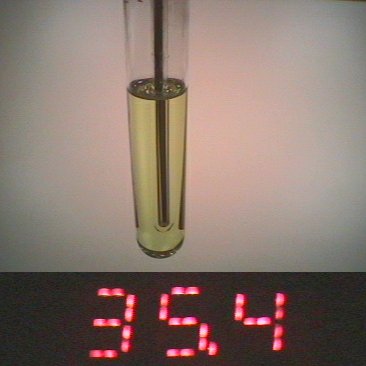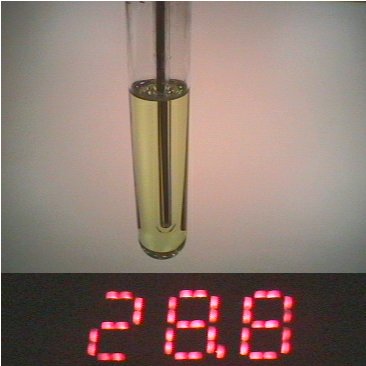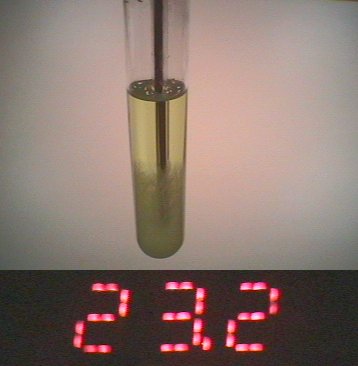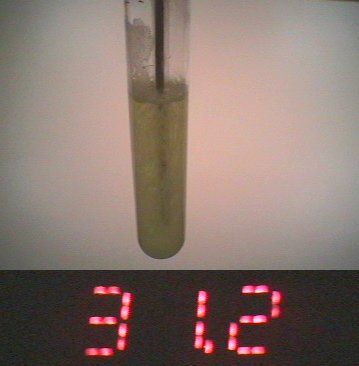| Photo 4: |
The heat energy released as the substance crystallizes causes the temperature
to rise to 31.2°C.
A supercooled melt is a metastable state of a (usually very pure) substance
that remains in this state of aggregation, even in the technically forbidden
temperature range below the solidification point. Consequently, at equal
pressure, a supercooled liquid (or melt) will have a lower temperature
than that of its aggregate state. However, the smallest addition of impurities
-- or just physically jarring the substance -- leads to a release of the
melting enthalpy and the substance spontaneously crystallizes. |







